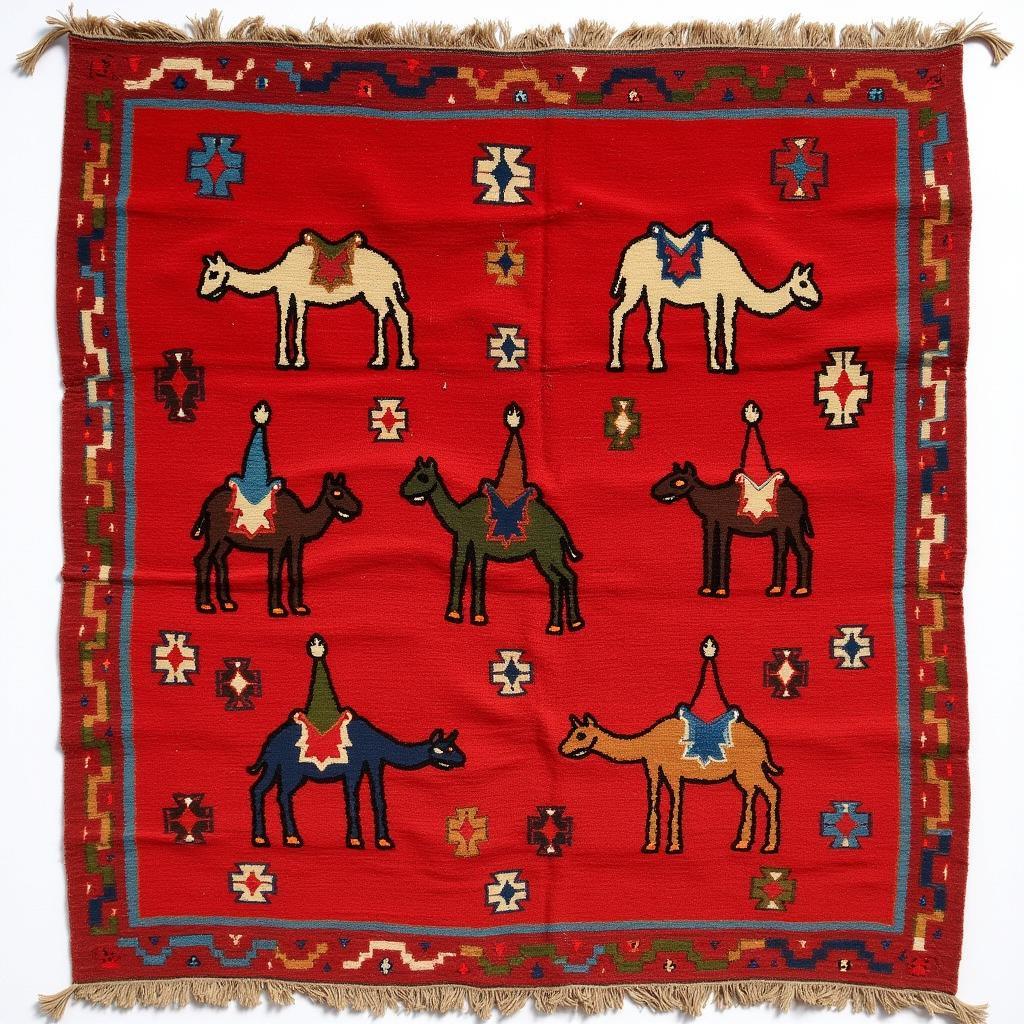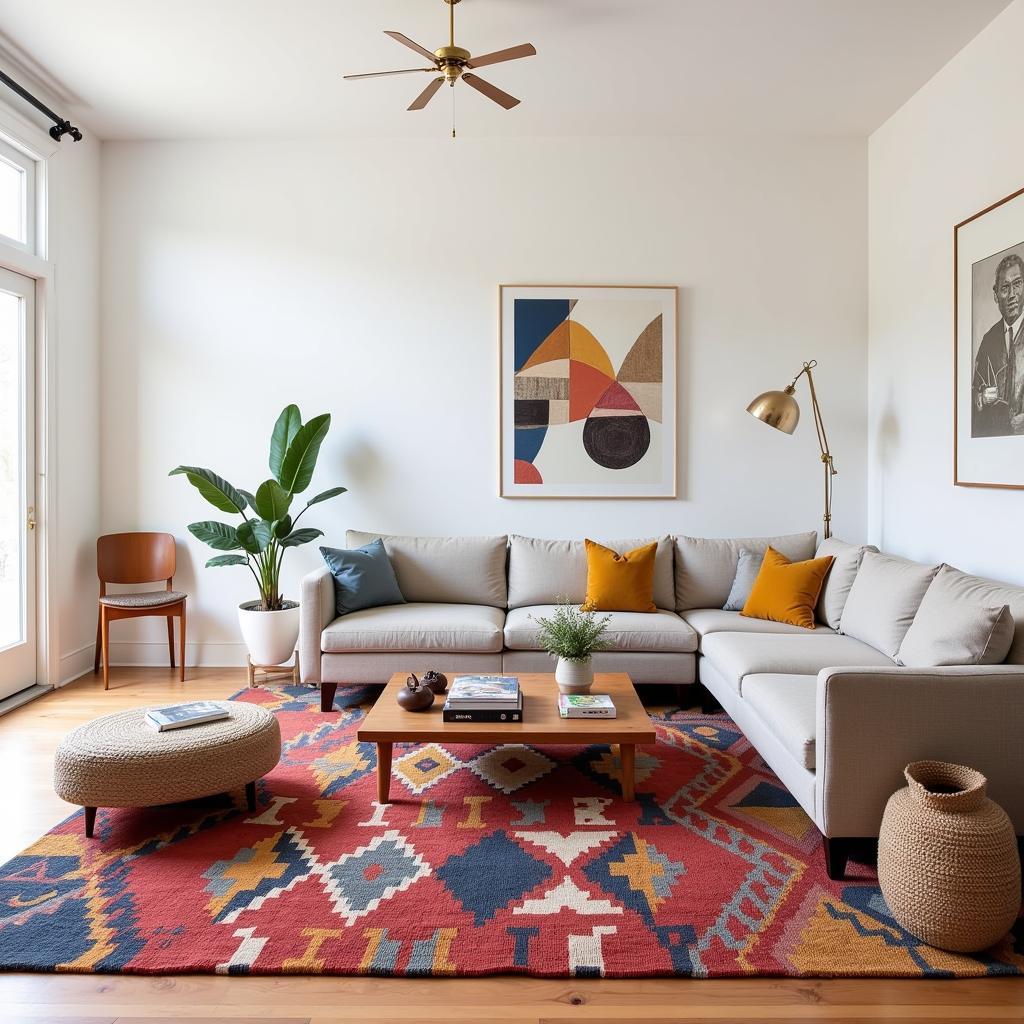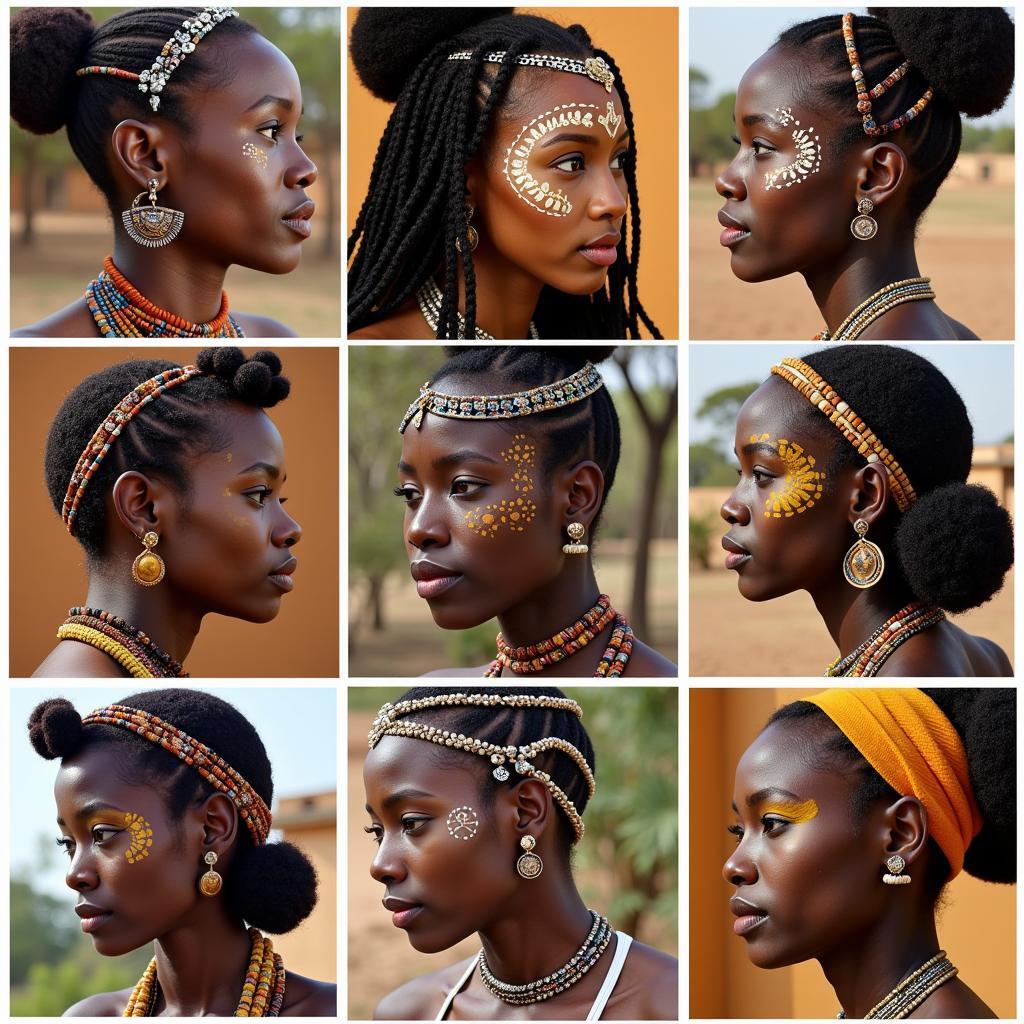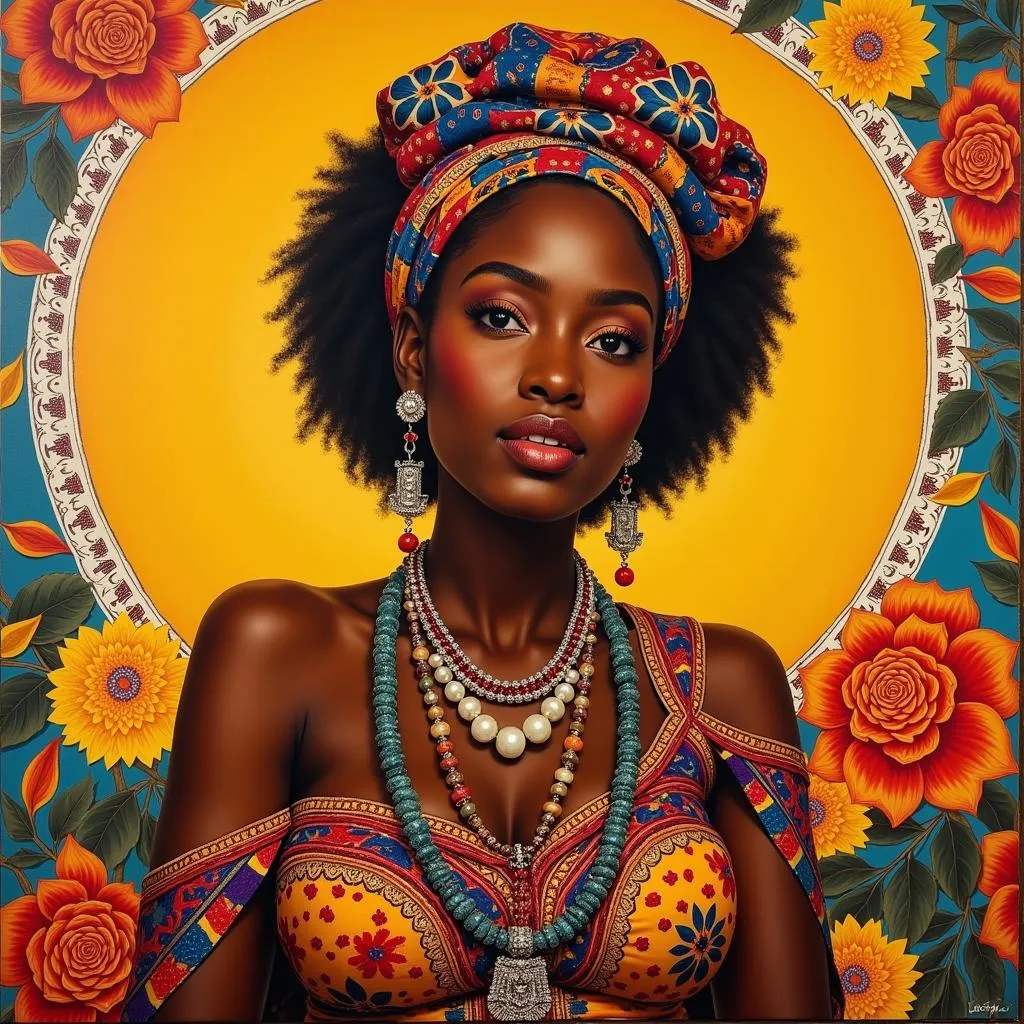Unraveling the Beauty of African Kilim Patterns
African kilim patterns are more than just decorative motifs; they are visual narratives woven into the fabric of diverse cultures across the African continent. Each pattern, often passed down through generations, carries symbolic meanings, historical references, and reflects the unique artistry of its origin. These captivating designs, bursting with vibrant colors and intricate details, offer a glimpse into the rich tapestry of African heritage and creativity.
Exploring the Significance of Kilim Patterns
Kilims, traditionally flatwoven textiles, have long been an integral part of African Life. Beyond their functional use as rugs, blankets, and wall hangings, they serve as powerful cultural expressions. The patterns woven into these textiles often depict abstract representations of daily life, spiritual beliefs, social structures, and the natural world. For instance, geometric patterns might symbolize abstract concepts like balance and harmony, while stylized animal figures could represent strength, wisdom, or ancestral spirits.
 African Kilim with Geometric Patterns
African Kilim with Geometric Patterns
Deciphering the Language of Colors and Motifs
Each color in an African kilim pattern holds significance. Red, often associated with warmth, power, and protection, is a recurring hue in many cultures. Blue, linked to the sky and water, can signify peace, tranquility, and fertility. Yellow, reminiscent of the sun, often represents wealth, happiness, and abundance. Green, the color of nature, symbolizes growth, prosperity, and harmony. These vibrant colors are combined with a variety of motifs, each carrying its own unique meaning.
For instance, the Ashanti people of Ghana are known for their kilim patterns that feature stylized Adinkra symbols. These symbols, each representing a proverb or a concept, provide a glimpse into the Ashanti’s rich philosophical heritage. Similarly, the Berber tribes of North Africa are renowned for their intricate geometric designs, often incorporating stylized representations of animals, plants, and everyday objects, narrating stories of their nomadic lifestyle and beliefs.
 Berber Kilim with Stylized Animal Motifs
Berber Kilim with Stylized Animal Motifs
African Kilim Patterns in Contemporary Design
Today, African kilim patterns are experiencing a resurgence in popularity, finding their way into contemporary interior design, fashion, and art. These bold patterns, with their timeless appeal, add a touch of cultural richness and visual intrigue to modern spaces and creations.
“The beauty of African kilim patterns lies in their ability to transcend time and trends,” says Abena Nkrumah, a textile historian and curator specializing in African art. “They are a testament to the enduring creativity and artistry of African cultures, offering a window into the diverse narratives woven into the continent’s rich history.”
 Modern Living Room with African Kilim Rug
Modern Living Room with African Kilim Rug
Conclusion
African kilim patterns are far more than decorative elements; they are intricate visual stories passed down through generations. They speak of cultural heritage, spiritual beliefs, and the artistic ingenuity of diverse African societies. By understanding the symbolism and appreciating the craftsmanship behind these intricate designs, we gain a deeper appreciation for the rich tapestry of African culture and its enduring legacy.



